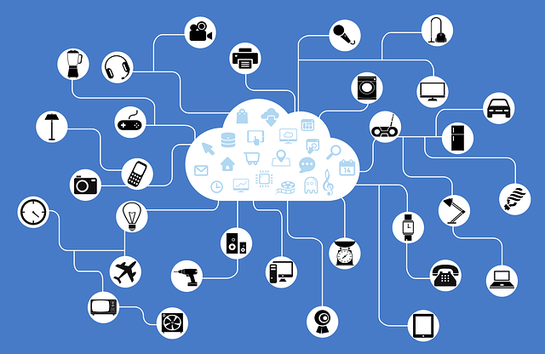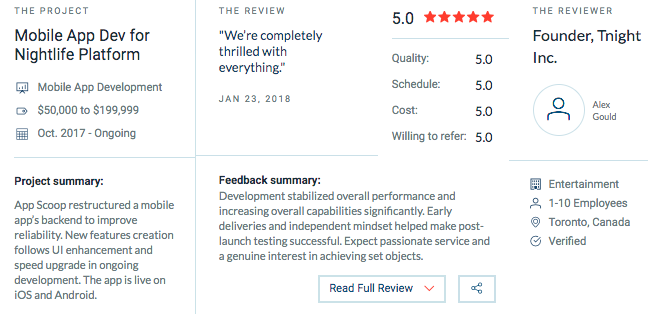Your pre-launch marketing should be stretched out over a period of three months. Condense the most important elements of pre-launch one week before rolling out the app and push the rest of the items to the post-launch roadmap.
Let’s take a look at the 33-Step guide to market you mobile app into the play store and making your app a success.
1.Fix a release date
It is very important that you schedule a launch date taking into account fixes and bugs that you might find during your final review stage. Don’t try to scram in last minute “things to do” just before the app release. For instance, Apple has a strict review process and the changes suggested might delay the process. The hard launch should be planned at a date that you know you wouldn’t have to further delay.
2.Determine the demographics of your user
According to the research done for your app during the planning stage, determine the demographic that you will be targeting. Understand who your target audience is and determine the features that you need to highlight while marketing the app.
3.Competitive analysis
As there are millions of apps in the market, there are definitely quite a few apps that are similar to yours. Make a list of the top 10 competing apps, their current price (if your app is not free), their ranking, their version type, their features, their reviews by the users and then compare them with your app. Think of how your app solves a pain point for the user or find the x-factor that it can offer to users. This will determine your entire marketing strategy.
4.Establish your Unique Value Proposition
As mentioned in the earlier point, determine what makes your app unique and capitalize on that.
5.Define the message of your brand and its positioning
A story behind the app can help you market your app to users that identify with the struggle or the reason your app was made. For example, a helpline app for safety of woman travelling at night (or day) will strike a chord with the female demographic. Here, the brand’s voice will be a woman.
6.Brand styling
Your marketing strategy needs to have a particular font, logo or image that the user will recognize. For instance, if your app has used cartoon images in the app as well as, to promote it, the marketing strategy should revolve around cartoonish elements.
7.Make a pitch deck
If you wish to attract investors to buy into your app, you need to make a visual representation of the story behind your app along with its mission and vision. The pitch deck needs to be concise and easy-to-understand.
8.Prepare your Press Kit
Once your app launches, you will need to send out app details and pitches to several marketing agencies, users or potential investors. You need to create your press kit that has high-res images of your app’s logo, screenshots, marketing images and content that includes information about the app’s functions and features.
9.Create a Media List
In today’s digital world, the best way to PR your app is by using influencers, publications and bloggers that have a huge audience. It’s even better if you filter them according to your app’s target audience. Connect with them and give them a brief about your app. Also, try to work out a promotion strategy with them.
10.Create a website, micro site or landing page
Create a launch page or a small video trailer about your app.
11.Create an address book with the emails acquired
A good marketing plan involves sending emails to users interested in your app. Keep your followers updated on the launch date, new updates, features, etc.
12.Optimize your app for mobile visits
Most searches are done through the mobiles. Ensure that your marketing strategies or tools are optimized for mobile.
13.Establish your monetization strategy
Mobile app monetization can be done through freemium based apps (in-app purchases), ad-supported or subscription-based. Choose your strategy as it is a key element that you need to work with during your app marketing process.
14.App Store Optimization (APO)
App Store Optimization involves optimizing your App Store page to rank higher in search results and convert at a higher rate.
15.Choose a keyword for your app name
A good title for your app will attract users to download your app. Use a keyword that helps the users search for your app. Keyword research is probably the most crucial part of ASO. A great tip would be to create long and short tail keywords.
16.Highlight the features and benefits in the app description
Note down the features and benefits in the app description to attract the users to download the app. List the feature/benefit that makes it different from other apps, first in the list.
17.Add key screenshots and videos in your app description
iOS and Google Play both allow for a short video preview of your app. Use this to show off game play, demo functions to compel users to download it.
18.App category
It is very crucial to select the correct category for your app. For example, if you have made a game that is adventure, don’t categorise it in sports.
19.Create a content marketing strategy
Drive traffic and brand awareness with content and build trust with your users through your content. Create a quality blog with great content and keywords so that it appears on the first page of search engines.
20.Set up social media pages
Facebook, Instagram, Twitter, LinkedIn, Pinterest, and other social platforms let you expand your web presence and allow you to directly communicate with your target audience. Regulate your posts and engage with your users through these pages.
21.Set up Google Alerts
Set up a branded keyword alert to track places that users are talking about your app.
22.Create promotional offers/discount coupons
Offer promotion and discount coupons on products in the app or for a partner company. For instance, a coffee shop can have a certain percent of discount on updating a code in the app.
23.Plan contests and give-away gifts
Planning contests is a good way to communicate with the user. The chances are that the user will visit the app more often for playing contests or winning merchandise.
24.Collect reviews
Set up alerts for your users to post a review about the app. After two weeks is the best time to ask for a review.
25.Track user acquisition
Use an attribution platform like AppsFlyer or Kochava to keep track of where your downloads are coming from.
26.Link to your app
Create a link of your app that you use in all forms of communication, it could be emails, posts, images, etc. Anything that interests the viewer could become your potential user if a link is provided in that vey post.
27.Engage with your existing users
It’s imperative that you engage with your current users and hold their interest. You don’t want to end up with users uninstalling your app.
28.Apply for mobile app awards
This can help you reach new networks of potential users.
29.Push notifications
Push notifications have been shown to increase user retention, with statistics showing anywhere from a 56% to a 180% improvement. Users who have opted into receiving push notifications exhibit 88% higher app engagement than those who haven’t.
Reference site: http://info.localytics.com/blog/app-user-retention-improves-in-the-us
30.Focus on customer service
Ensure that if your user is facing difficulty with your app, there is a way that they can contact you. A prompt reply and a solution can really help you gain loyal customers for life.
31.Organize a Burst Campaign
“Burst campaign” is one of the most popular techniques used by mobile app marketers who want to climb the app store ranks. The idea of a burst campaign is to provide a “burst” of exposure for your app in which you aggressively purchase paid media exposure over a short period of time- usually 24 to 72 hours, depending on budget.
The goal is to get as many paid installs as possible, boosting your rank. All this with the hope of increasing the volume of quality organic installs – that should follow when the app is finally ranked high enough to be discovered.
32.Offer referral bonus
Offer your users a bonus when they advertise or help you spread the word. “With a staggering 3900% growth rate, Dropbox is an excellent example of how powerful referrals can be. The company had just 1,00,000 registered users in 2008, which climbed to a staggering 4,000,000 registered users within a mere 15 month period as a result of their referral program.”
Reference site: https://www.referralsaasquatch.com/dropbox-customer-referral-program-by-the-numbers/
33.Continuous updates and maintenance
Based on the feedback received and the bugs pointed out by the users, ensure that the new version doesn’t have the same. Continuous maintenance and updates for the apps ensures seamless working of the app for the users.
Conclusion
These strategies will help you promote your app for a long-term. Engaging with the users is of utmost importance. The marketing strategies should be based on your target audience. The true success of your app does not lie in the number of users or downloads but is based on the functionality and user engagement of your app.











